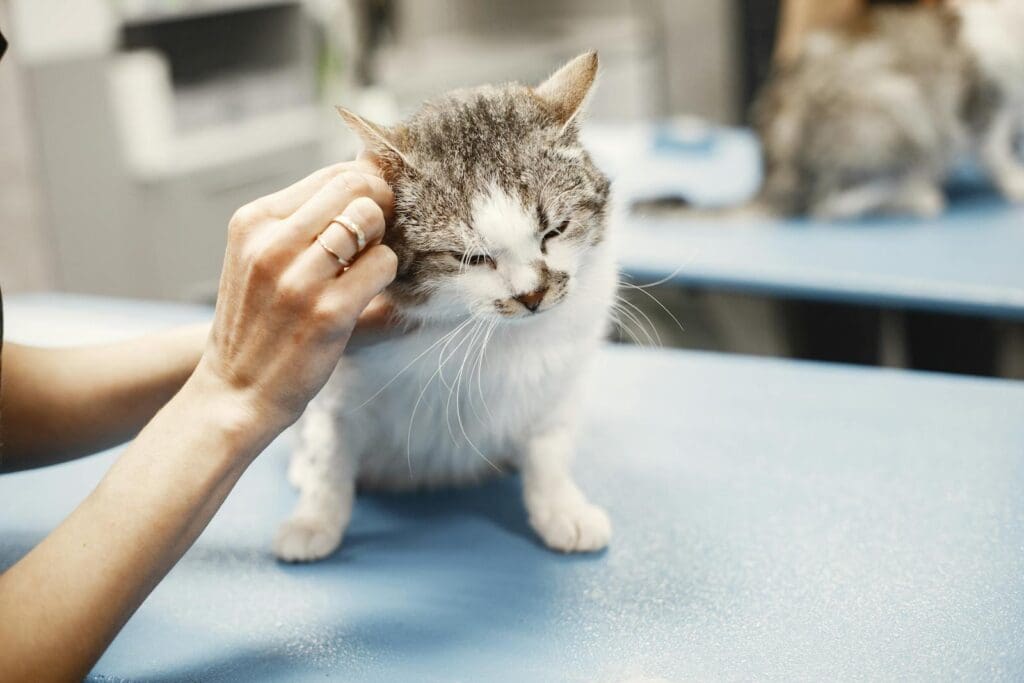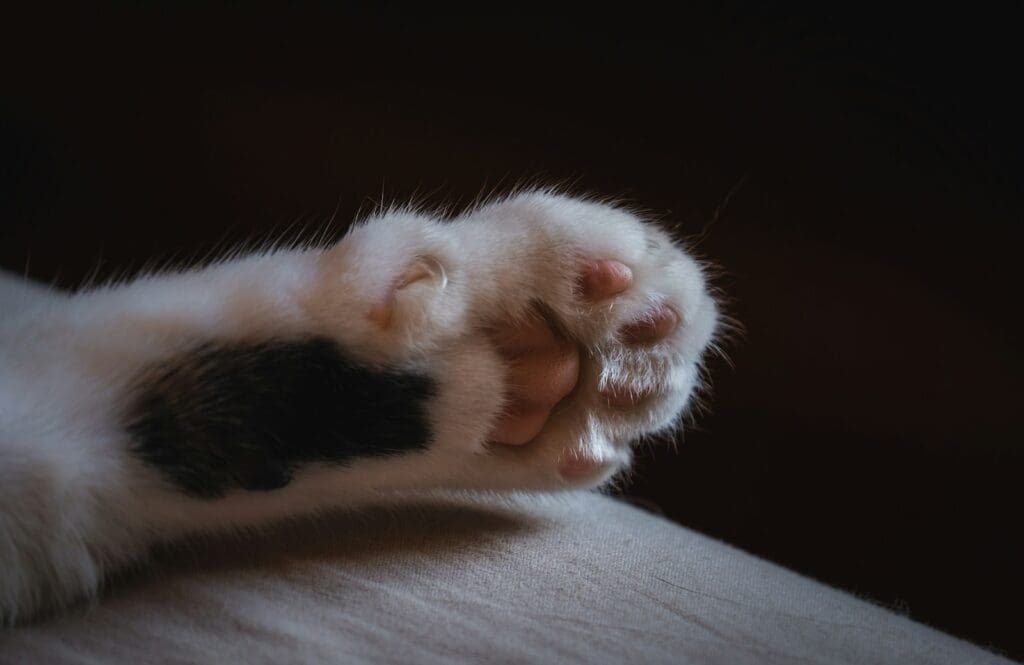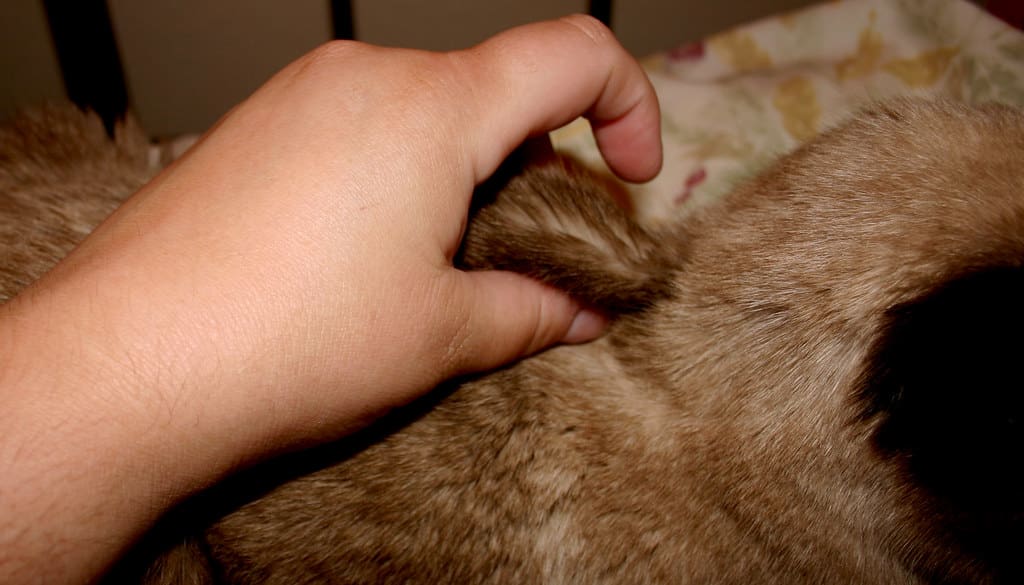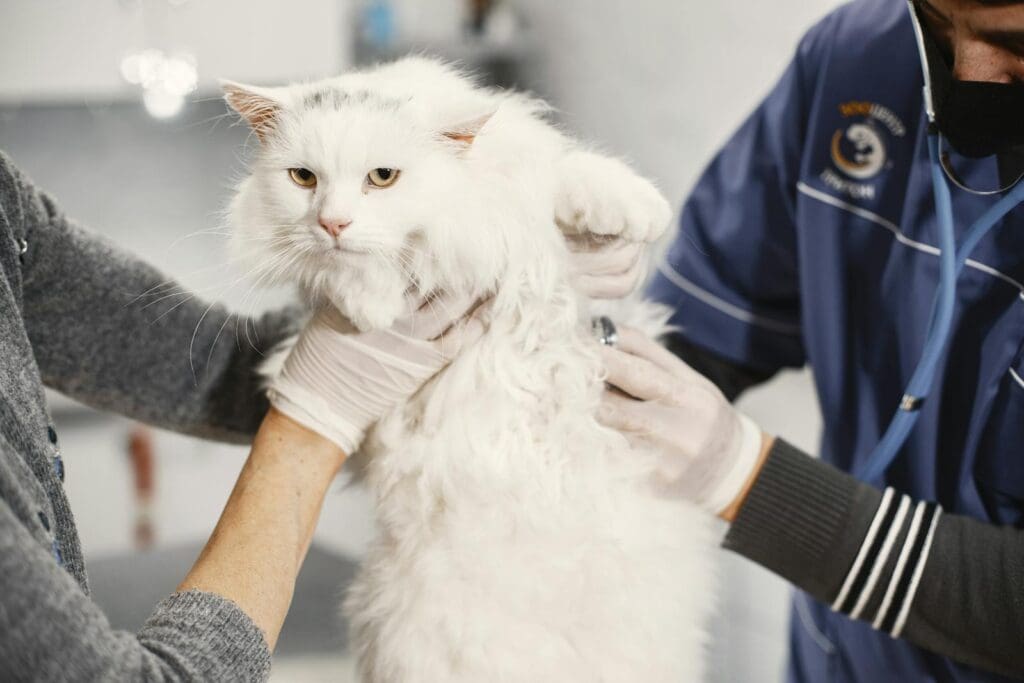Cats often learn several basic kinds of biting and scratching behaviors as kittens. If not trained early, cats won’t know using their claws and teeth is inappropriate. Learn why cats bite and scratch and retrain them to stop.
10. What Causes Aggressive Biting or Scratching?

You’re petting your cat, and instead of the cat returning affection, it bites or scratches you. This often happens because humans don’t understand or ignore the cat’s body language. It doesn’t know how to tell us to stop. Look for narrowed eyes and ears pulled back. Look for tail lashing. Reading the signs can help avoid scratches and bites.
9. Watch Out for Redirected Aggression

Sometimes when a cat sees another animal it will redirect its aggression by attacking the first thing it sees in the immediate vicinity. If your cat is viewing other animals through a window, move the cat to another area. Then reassure the cat, petting or playing with it. Give it extra treats when it interacts calmly.
8. Rule Out Medical Causes

Sometimes when a cat exhibits aggressive biting and scratching, it could indicate the presence of an underlying medical condition. These could range from undetected wounds, distress from fleas or mites, or a hormone imbalance such as hyperthyroidism. When an otherwise docile cat exhibits unexplained aggressiveness, take them to a veterinarian to rule out a medical cause.
7. Hyperesthesia

Unexplained, aggressive behavior, bursts of exaggerated and repetitive grooming, or self-mutilation are signs of a rare condition called Hyperesthesia. In extreme cases, seizures may be present. Hyperesthesia first appears in cats around age 1. It is prevalent among Siamese, Burmese, and Abyssinian cats. If you see these signs, see a veterinarian.
6. Trim Your Cat’s Claws

Keeping your cat’s claws trimmed helps in two ways. First, it will make its nails less sharp, reducing the damage it does when clawing or scratching. Secondly, it will feel less need to scratch and claw to wear down its nails. Just don’t clip them too short, or you could draw blood and cause pain for the cat.
5. Redirect Your Cat’s Attention

Your cat may playfully bite your hands or feet out of boredom and need of a play object. The simple fix is to redirect your cat’s attention toward something else. It may be an interactive toy, a scratching post, or something else. Such positive correction gives the cat an appropriate outlet for their behavior.
4. Say: No!

Say, “No!” Or you can choose any other single corrective word. Say the word firmly and clearly. But don’t scream. You want to break that cat’s focus, not frighten it and make it fear you, which will backfire. Only use the corrective term at the moment when the cat bites or scratches, otherwise the cat won’t make the connection.
3. Grab Your Cat by Its Scruff

Only do this in severe circumstances when the cat continues to hurt you. This mimics a mother cat’s punishment to an unruly kitten. Grab the cat by the scruff of its neck, pick it up, and move it to another area. This breaks the behavior and removes them from the situation. Next, redirect the cat’s behavior to something appropriate.
Read More: Ten Reasons to Never Own a Cat
2. Examine Your Cat Regularly

It’s important to examine your cat regularly. This will make the cat comfortable with you touching every area of its body from head to toe. Look for behavioral or physical changes. Check for any signs of injury, wounds, or abnormalities. Pay careful attention to the warning signs of impending aggression.
Read More: How to Discipline a Cat the Right Way
1. Cat Still Aggressive? When All Else Fails…

If you’ve tried all the aforementioned remedies and nothing seems to stop your cat from biting and scratching you, it’s time to seek professional guidance. Take your cat to a veterinarian. In some cases, the vet may run bloodwork to look for conditions that can cause elevated aggression. They may also refer you to a behavior specialist.
Read More: 10 Ways to Stop a Cat from Scratching the Furniture






